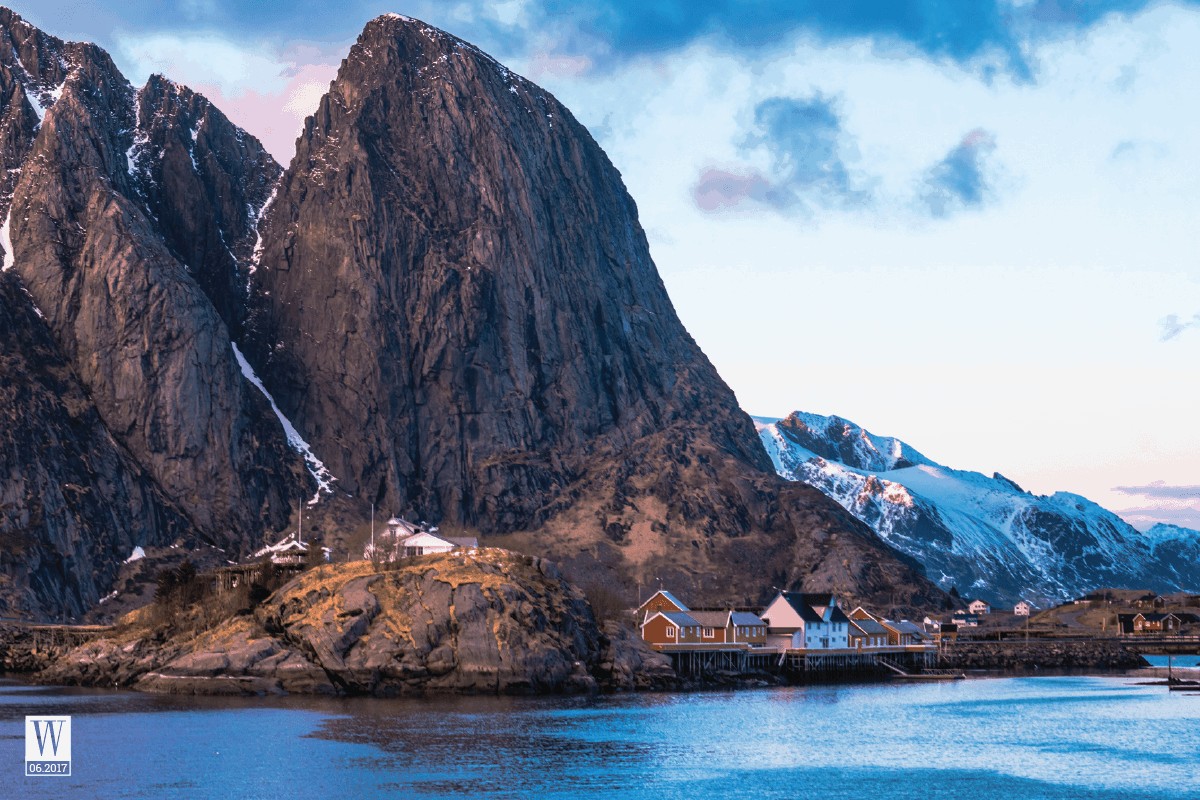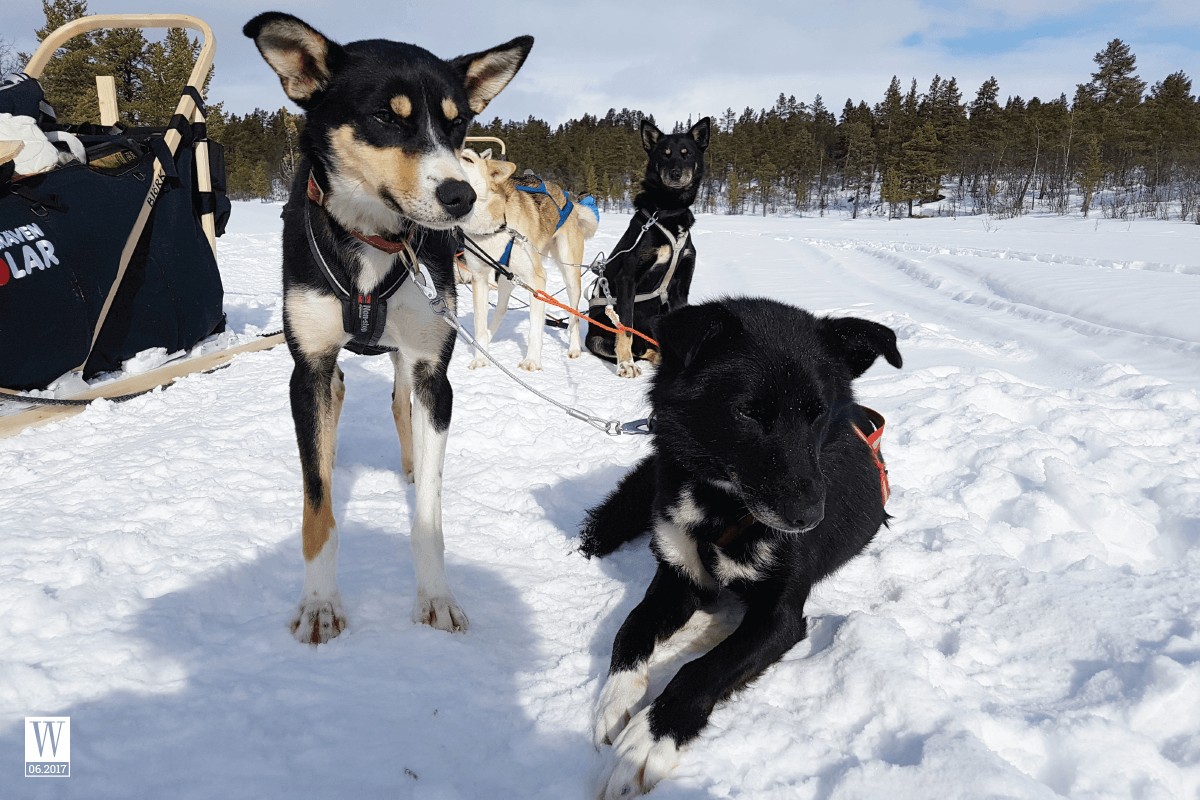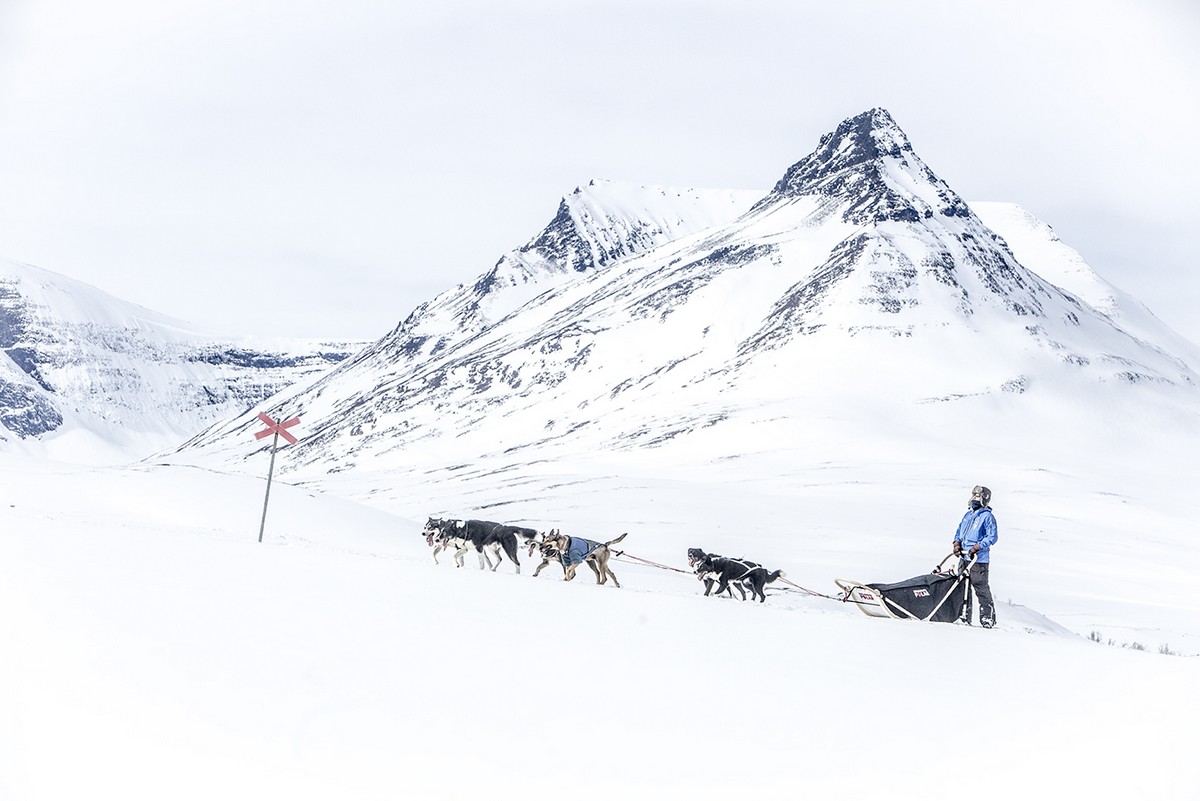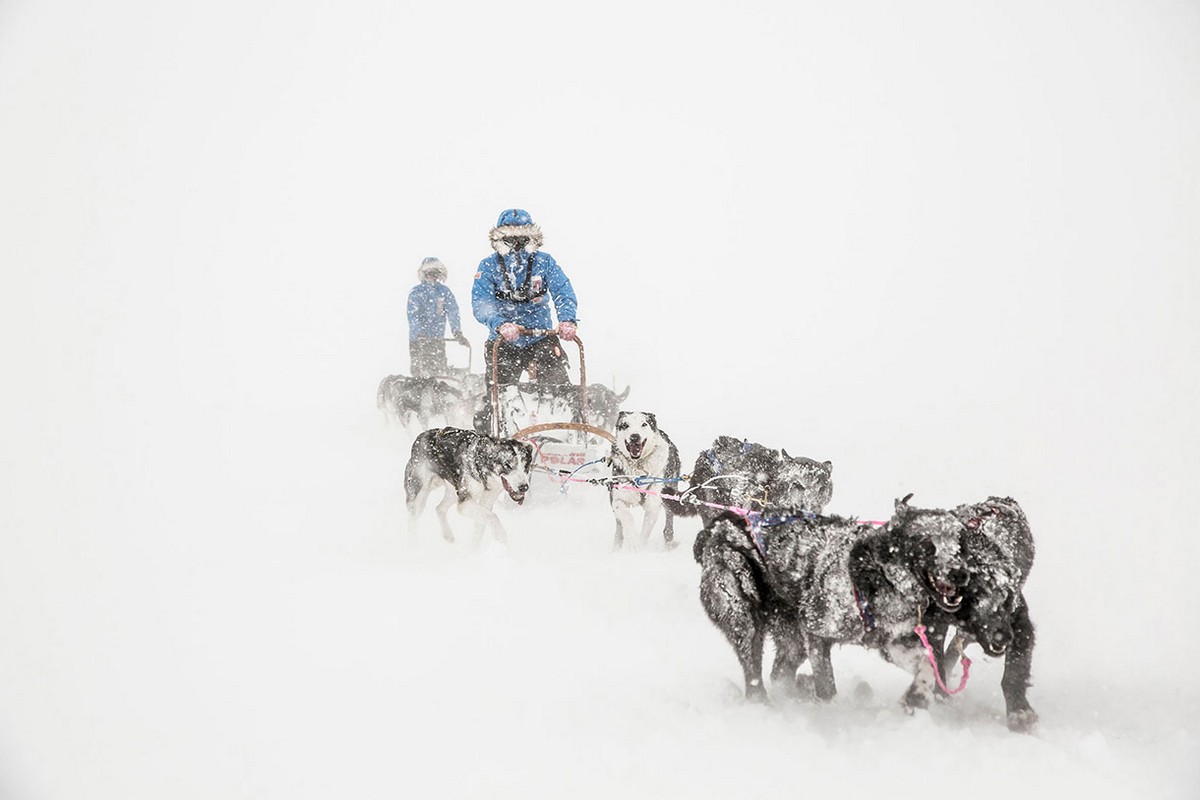Fjällräven Polar is a dogsled adventure in the Nordic wilderness, North of the arctic circle that took place 3rd – 8th April 2017. It started in Signaldalen, Norway, just Northwest of Treriksröset and went 300km (186 miles) South through Sweden along an ancient Sami trade route and ended by Väkkäräjärvi Lake. 26 participants and 2 guests from 13 nationalities, 7 mushers, and a team of energetic huskies, all made the great journey discovering a majestic snow-covered world, where survival instincts take hold and life-long memories are made. 29 year-old backpacker Hoang Le Giang was the sole representative of Southeast Asia to join the expedition.
[rpi]
I am not what you would label a 5-star all-inclusive tourist, you won’t find me sizzling on a beach like a sardine in oil. Bone-chilling cold, outdoor sleeping and taxing treks are more my cup of tea. Considering all this, it is quite obvious that when I saw the teaser video for the Fjällräven Polar trek last year, I wanted to join right away. It is exactly my definition of adventure: A remote location, testing your own limits, defying nature, together with dogs and a international group of people

Unexpected start
The adventure sounded like a dream to me. The only catch was that one could only join by winning. Ok, challenge accepted! Night after night I learned everything about the polar expedition and it soon became clear: I needed support from people in Vietnam. Weeks of trepidation and enthusiastic social media advertising followed and… I won.
It’s Monday morning, 6am and my alarm clock is ringing. Off to Sweden. I meet the Fjällräven team and the remaining participants in Sigtuna, near Stockholm. The first get-together is surprisingly familiar. I’ve been chatting with the others on a daily basis for the last three months. I guess this is what it feels like when you finally get introduced to an online acquaintance. The next day begins pretty early: the alarm goes off at 5am, 30 minutes later we have breakfast and then we are off to the airport. We’re flying via Oslo to the high North, to Tromsø. Once there, we are greeted by rain. Rain? Seriously!? This is definitely not what I was expecting.
Once we reach the camp in Hatteng, we start right away with equipment instructions and briefings: how to pitch the tents, use the gas cooker and to stow away the gear. All this in the pouring rain. I just hope tomorrow will be different. Later that night we are introduced to our guide and musher. He will be our leader for the days ahead and he gives us a few last minute tips. The most important rule, though, is quite simple: never ever let go of the sled! Well, let’s see how I’ll fare in the future…
Meet the “Alaskan transporter”

The feeling the next day, when we finally get off the bus and are me by the noise of 230 Alaskan huskies, is absolutely indescribable. It’s a howling, barking, energetic, vibrating mess. It’s quickly down to business for us: we have to harness up the dogs, arrange the gear and load up the sleds. Oh boy, these small huskies are a force of nature. I’ve got my hands full, until all dogs are finally lined up in front of my sled. And suddenly we are moving! I ride directly in the lee of our musher, leading our team. Unbelievable! “Please don’t embarrass yourself,” that’s all I am thinking. And it works; my first 30 minutes on the sled are accident free, thankfully. I learn to trust my canine companions; a good partnership will be essential for the next few days. Like a snake made of five sleds and30 dogs, we slide through the varying landscape. Sometimes it’s quiet and peaceful, an infinite void made of snow and more snow. Sometimes we are gliding over a frozen a lake, flanked by breath-taking, snow covered mountains. Sometimes it is a ride on bumpy terrain through the arctic forest. We float on this strange, brand-new looking planet, remote and unspoiled. In the silence, I listen to the even pace of 24 small feet and the wind blowing in sync with the runners. In my warm down parka, I feel like I’m in a safe cocoon, removed and far away from reality. I like this lone, cold, white world and I am reminded of how unique and precious our little planet is. After a long day on the sled, with ‘only’ three or four crashes, we finally arrive at the camp. It’s windy and snowing.
A short break would be heaven. No time for that, though: we need to take care of our dogs, pitch the tents, fetch water and get the gas cooker going, which is surprisingly difficult at the moment. Teamwork is required as the tasks take time and energy. We need around two hours to finish pitching tents.
Our outdoor expert Johan Skullman has a new lesson for us every night. How to survive in extreme situations, about the right gear and clothes, enough sleep, food and water, how to start a fire but also mundane stuff like making your own sleep more comfortable. He is an inspirational mentor to all of us during this journey. From the present situation, he also taught us a lot of life lesson. When our burner had trouble and couldn’t start. The wind was too strong and the gloves were too thick for mending, my team decided to eat instant food (energy bars) instead of cooking and waited for the instructor to help tomorrow. The next day, he came and told us: “The burner and us like a life-long friendship that absolutely brought us good things so when it got trouble, we have to fix it, not to throw it away. When we are patient enough to fix it, it is like healing a ruined relationship.”
As unexpected as the heavy rain, is the ceaseless falling snow – a threatening sign of a snow storm. We decide not to sleep at the mountain’s foot as planed. Instead, we pitch our tent on the wide vast plain of white snow to avoid a probable collapse.

Exhausted but happy I crawl into my sleeping bag and I fall asleep right away until the dogs howling wake me up. Snow is falling lightly against our tent. All the surroundings remind me of the reason why I am here and how the beautiful yet harsh nature inspires me. In a swift move I leave my sleeping bag and pull the zip of our tent open. There is nothing but us and our dogs for miles around.
As usual, we take care of our pretty white grey transporters before ourselves. We feed the dogs with chopped dried meat that was boiled before serving. After we assure our dogs are full, well and happy, we pack up the equipment and prepare breakfast with hot water. If the dogs cough or sneeze, it would be a big problem. They have to run 80km per day on the snowy road. Therefore,when the temperature drops under -5 Celsius at night, we have to warm them up with more clothes.
For me, I had no expectations whatsoever regarding the food during this adventure as I prepared mostly for handling the extreme climate condition. But actually, I’m all the more amazed! The food from “Real Field Meal” by Drytech is high-value, provides us with the necessary energy and, what’s most important, tastes delicious! It’s definitely on my list for my next journey! We eased into a daily routine.
Discovering, learning and connecting
I am glad to ride right behind our musher, this way I am able to learn from him and his way of handling the dogs. The dogs are always over-excited in the morning andspeed up so quickly that I have to step on the break all the time to control the sled. When we encounter an uphill road or a road with thick layers of snow, we jump off the sled and push the dogs. Our ride leads us through a dreamlike landscape and before I know it, it’s already our last night.
A peculiar mood hangs over the camp, a mix of melancholy and excitement: we sleep outside tonight, no tent, only with our sleeping bag. I stay awake for a long time, revelling in the beauty of this night, trying to hold onto the moment. The temperature drops to -24 degrees meaning that we break the Fjällräven Polar record for an outdoor biwak! I fall asleep under the starry sky and the flaring lights of the aurora.

The sun wakes me up the next morning, shining crystal clear in my eyes. The world glitters and after a ride that is way too short, we finally cross the finish line. What an overwhelming feeling! We did it and we are welcomed with applause and cheering. After four days and 300km through the arctic I am exhausted, my skin burns like fire and I wear nature’s marks with pride. I feel like Hercules after finishing his mission, like Michelangelo after completing the Sistine Chapel, but just one glance forward and I instantly know who the real heroes are: our huskies! They pulled our sleds day after day, kilometre after kilometre through the never-ending vastness of Scandinavia.
It’s been so extraordinary, being a memberof such a large project, where everyone welcomes you with joy and open arms. Beautiful friendships have been formed and it warms my heart to see how people who are so different and come from so many distant cultures are able to build relationships, to get to know and help and support each other. We grew to be a Polar family and I can hardly wait to meet them all again.
Wanderlust Tips
♦ Clothing
Wearing multiple layers of clothing will help keep the heat better than just wearing a thick coat, wearing three layers, tight-fitting long sleeve shirts to absorb moisture, a sweatshirt, sweater or ultra-light down jacket if it is very cold, and outerwear to provide insulation.
It is recommended to wear a full-face helmet as well as cover your hands as much as possible. You should avoid clothing made of cotton, because cotton absorbs sweat and when clothing is wet, you may get cold. You should wear a coat that prevents outside water from seeping in while also allowing sweat to escape.
♦ Drinking
Drink plenty of water: Even without sweating, the weather is cold, so you would dehydrate faster. Water will help you quickly regain your body heat. Therefore, you should drink water before leaving the house and drink warm water during the trip.
♦ Shoes
Choose suitable shoes: Feet are the body’s most heat-sensitive parts, keeping your feet warm will help you feel warm. If you go to a snowy and icy area, it is really critical for you to pay more attention to your shoes. The most ideal type of shoes are waterproof ones that will actually keep your feet dry and comfortable. You should choose wide shoes because after 3 or 4 days, our feet and legs swell so shoes should be one size, or a half-size bigger than your regular shoe size. And, you should wear wool or sheepskin socks instead of cotton ones.
♦ Necessities
It is recommended to bring your mobile phone, destination map, GPS and emergency phone number. On the walking trails, you should put dry provisions, chocolate and candy into the coat pockets for unexpected situations like getting lost or losing your backpack in the middle of an uninhabited area.
♦ Body warmer pack
If it is possible you should bring a body warmer pack made from activated carbon, which is very useful when travelling. These patches have a long warming effect (over 10 hours), high average temperatures (about 53-63 degrees Celsius) and should be applied on the abdomen, back, thighs and feet. Do not apply directly to the skin to avoid blisters, it should be pasted through a layer of clothing and you must pay attention to monitor the temperature, if it is too hot, rearrange the patch accordingly.
Hoang Giang | Wanderlust Tips | Cinet


[…] cold bath tradition in Sweden is also long-established. The Swedes love spending time in their surrounded beautiful nature, […]